Shading correction and white balance
Shading Correction
All lenses show some vignetting as a function of the field angle. Hence, even with homogeneous object illumination, the signal intensity of the image decreases with increasing image height.
Shading correction (or flat field compensation) is used to compensate for lens vignetting as well as for inhomogeneity in the illumination. Shading correction is achieved by performing a white balance calibration during illumination of a homogeneous white target.
An individual gain for each pixel is obtained by scaling each value to a normalized maximum signal. The oscilloscope display now shows a homogeneous intensity distribution along the entire length of the line sensor.
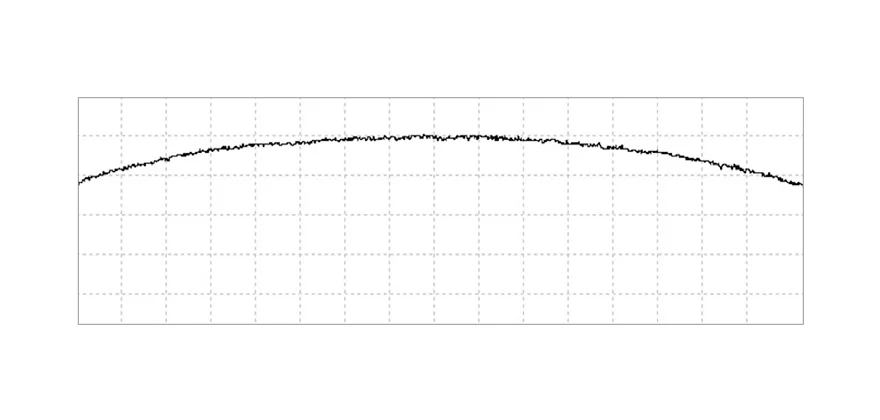
Before Shading Correction: Lens Vignetting and inhomogeneous object illumination
A monochrome line scan camera signal of a homogeneous white calibration target showing signal trimming caused by either lens vignetting or inhomogeneous object illumination.
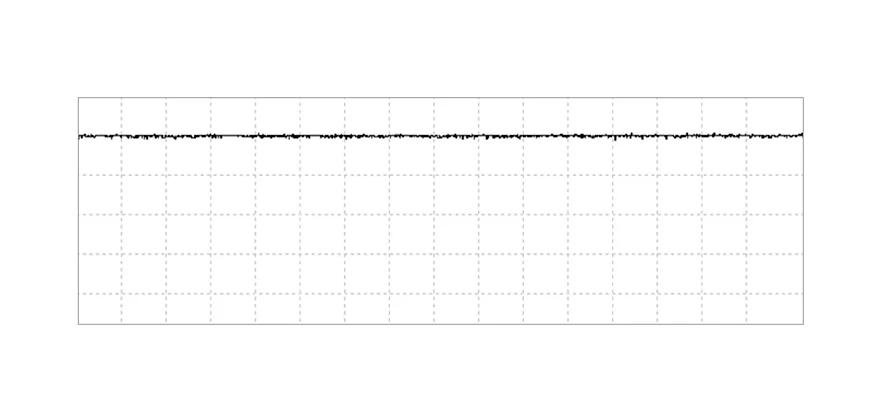
After Shading Correction: Homogeneous intensity distribution
Monochrome line scan camera signal after shading correction.
White balance
The shading correction procedure is also used for white balance calibrations in color line scan cameras. The different sensitivities of the individual color channels of the sensor are compensated for, as well as any color inhomogeneity arising from the illumination source.
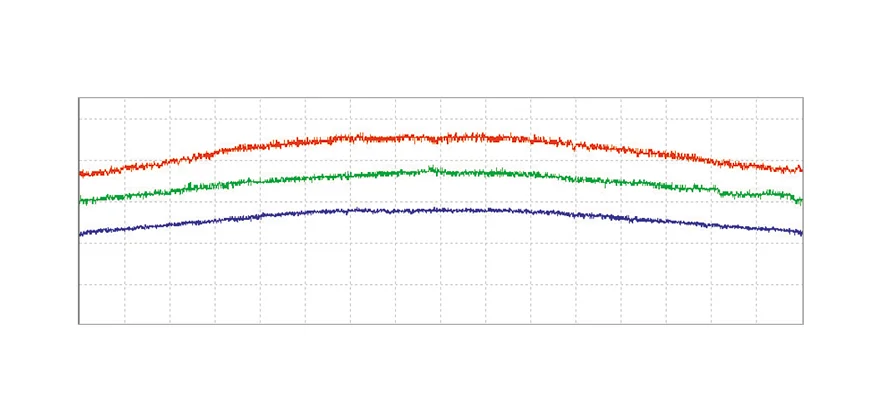
Color signal before using shading correction for white balance
Signal from a color line scan camera of a homogeneous white calibration target. Differences in the offsets in the amplifier for the red, green and blue signals lead to a differing signal level for the three colors.
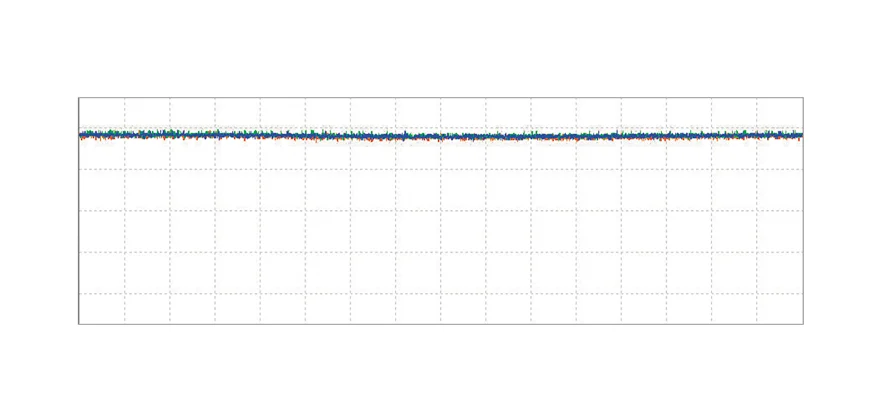
After Shading Correction and White balance: Homogeneous intensity for all color channels
Color line scan signal after shading correction.
SKLineScan: Shading Correction and white balance
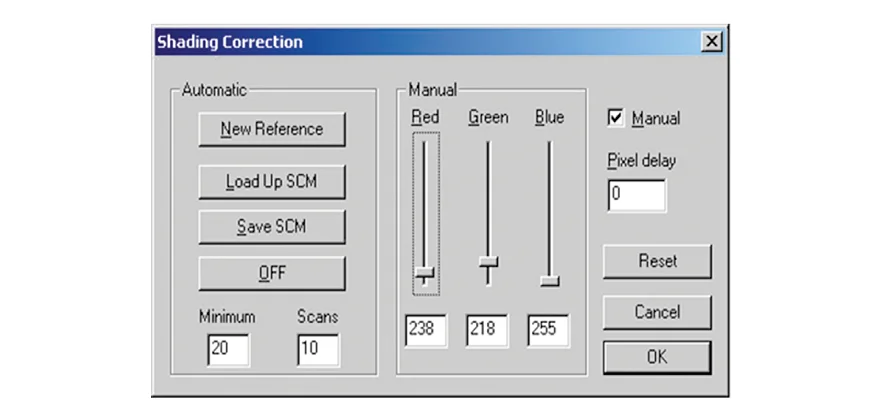
SKLineScan Software: Shading Correction and white balance
Pop-up window for performing shading correction in the SkLineScan software allows white balance calibration to be performed automatically or manually.